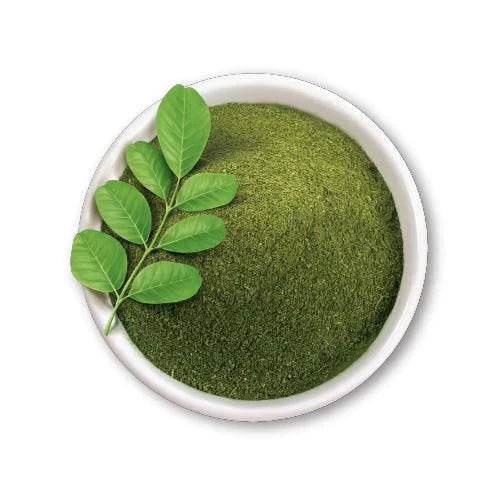
Unlocking the Potential of Indigo Leaf Powder Nature's Hidden Treasure
Introduction:
Indigo leaf powder is a natural dyeing agent made from the leaves of the indigo plant, scientifically known as Indigofera tinctoria. It has been used for centuries to create blue and green dyes for textiles, cosmetics, and other products.
The process of obtaining indigo dye from the indigo plant involves several steps:
- Harvesting: Indigo leaves are harvested when the plant is in its prime, typically during the growing season.
- Fermentation: The leaves are soaked in water and allowed to ferment. During this process, the indigo precursor molecules in the leaves are converted into a form that can be used for dyeing.
- Settling: The liquid is then left to settle, and the sediment at the bottom contains the indigo dye.
- Drying: The sediment is dried to create indigo leaf powder, which is the concentrated form of the dye.
Indigo leaf powder is commonly used in traditional textile dyeing processes, particularly in countries like India, where it has a long history of use in creating vibrant blue and green fabrics. It is considered a natural and environmentally friendly alternative to synthetic dyes.
Benefits of Indigo leaf powder:
- Natural and Non-Toxic: Indigo leaf powder is derived from a plant source, making it a natural and non-toxic alternative to synthetic dyes. It is generally considered safe for use on textiles and hair.
- Eco-Friendly: The production and use of indigo leaf powder have a lower environmental impact compared to many synthetic dyes, as it is derived from a renewable plant source.
- Rich and Vibrant Colour: Indigo leaf powder produces a vibrant blue or black colour when used for dyeing textiles or colouring hair. The colour is known for its depth and intensity.
- Traditional and Cultural Significance: Indigo has been used for centuries in various cultures for dyeing textiles, creating traditional garments, and maintaining cultural heritage.
- Permanent Dye: Indigo dye is known for its permanence, meaning it resists fading over time, making it a durable choice for fabric dyeing.
- Hair Benefits: When used as a hair dye, indigo leaf powder can help cover grey hair, add shine, and improve hair texture. It is often used in combination with henna to achieve different shades of brown, black, or blue-black hair.
- Scalp Health: Some people believe that indigo leaf powder can have a soothing effect on the scalp and may help alleviate scalp issues, although this effect can vary from person to person.
- Low Sensitivity: Many individuals with sensitive skin or allergies to synthetic dyes find indigo leaf powder to be a gentler and less irritating alternative.
- Customization: Indigo leaf powder can be used in combination with other natural dyes and ingredients to achieve a wide range of colours and shades, allowing for customization in dyeing projects.
- Cultural and Artistic Expression: Using indigo leaf powder in dyeing projects can be a form of artistic and cultural expression, as it connects individuals to traditional dyeing techniques and cultural practices.
Uses of Indigo leaf powder:
- Textile Dyeing: Indigo leaf powder is used as a natural dye to colour textiles, creating a range of shades of blue and green. It is a common choice for dyeing fabrics, clothing, and traditional garments in many cultures.
- Tie-Dyeing: Indigo leaf powder can be used in tie-dyeing techniques to create intricate and unique patterns on fabric. It is popular for creating bohemian and artistic designs.
- Batik: Batik is a traditional method of decorating fabric using wax and dye. Indigo leaf powder can be employed in the batik process to achieve intricate and colourful patterns on cloth.
- Shibori: Shibori is a Japanese tie-dyeing technique that involves folding, twisting, and binding fabric to create distinctive patterns. Indigo dye is often used in Shibori to produce beautiful and intricate designs.
- Block Printing: In some regions, artisans use indigo leaf powder to create block-printed patterns on fabric. This process involves carving designs onto wooden blocks and stamping them onto the fabric with indigo dye.
- Handmade Paper: Indigo leaf powder can be used to dye handmade paper, giving it a unique and artistic appearance. This is often used in crafting and art projects.
- Hair Colouring: Indigo leaf powder is used as a natural hair dye, especially in combination with henna. It can impart shades of blue, black, or blue-black to the hair, and it's considered a safer and more natural alternative to synthetic hair dyes.
- Cosmetics: Indigo leaf powder may be an ingredient in natural cosmetics, such as eyeshadows, eyeliners, and nail polishes, to provide blue or green colour options.
- Traditional and Cultural Practices: Many cultures around the world use indigo leaf powder as part of their traditional dyeing practices and for creating garments with cultural significance.
- Art and Craft Projects: Artists and craft enthusiasts use indigo leaf powder to create a unique and eco-friendly colour palette in various artistic endeavours, such as painting, mixed media, and craft projects.
- Natural Remedies: In some traditional systems of medicine, indigo leaf powder is used for its potential.
Conclusion:
In conclusion, Indigo leaf powder is a versatile and natural substance with a wide range of uses. Whether in traditional textile dyeing, artistic expressions, or natural hair colouring, it offers several benefits and advantages. Its eco-friendliness, vibrant colours and cultural significance make it a popular choice for those seeking a natural and non-toxic alternative to synthetic dyes. Additionally, its use in creating unique patterns and designs in various crafts and art projects adds to its appeal. However, it's essential to follow proper guidelines and instructions when using indigo leaf powder to achieve the desired results and to ensure safety, especially for sensitive individuals. Overall, indigo leaf powder is a valuable resource for those who appreciate its versatility and the cultural traditions it represents.
Check this out Medikonda Indigo Leaf Powder
